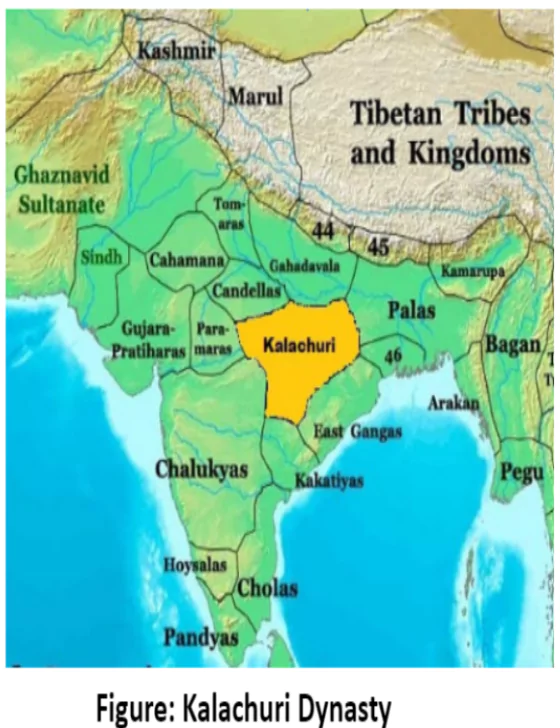![]() May 14, 2024
May 14, 2024
![]() 11792
11792
![]() 0
0
The Kalachuri dynasty, reigning from the 10th to 12th centuries, governed over two kingdoms: Chedi in Central India and Haihaya in Southern India. They were renowned figures from ancient epics and Puranas, with Tripuri as their capital near Jabalpur. The dynasty’s name, derived from “Kali” meaning long mustache and “Churi” meaning sharp knife, symbolized their authority and prowess.
 Northern Maharashtra Rule: Early Kalachuri family governed northern Maharashtra, Gujarat, Malwa, and parts of the western Deccan, likely centered at Mahishmati in the Narmada River valley.
Northern Maharashtra Rule: Early Kalachuri family governed northern Maharashtra, Gujarat, Malwa, and parts of the western Deccan, likely centered at Mahishmati in the Narmada River valley.
2. Important Rulers
| Must Read | |
| Current Affairs | Editorial Analysis |
| Upsc Notes | Upsc Blogs |
| NCERT Notes | Free Main Answer Writing |
The Kalachuri dynasty, with its significant rulers like Gangeyadeva and Karna, left a lasting impact on Indian history. Despite facing challenges and declines, they managed to resurge and expand their territories, leaving behind a legacy of military conquests and cultural patronage. Their contributions to Central and Southern India remain integral to understanding the region’s historical narrative.
| Related Articles | |
| UPSC NOTES FOR ANCIENT HISTORY OF INDIA | River Systems of India |
| Malwa Painting | Reform Movements in Southern India & Social Transformation |
<div class="new-fform">
</div>

Latest Comments